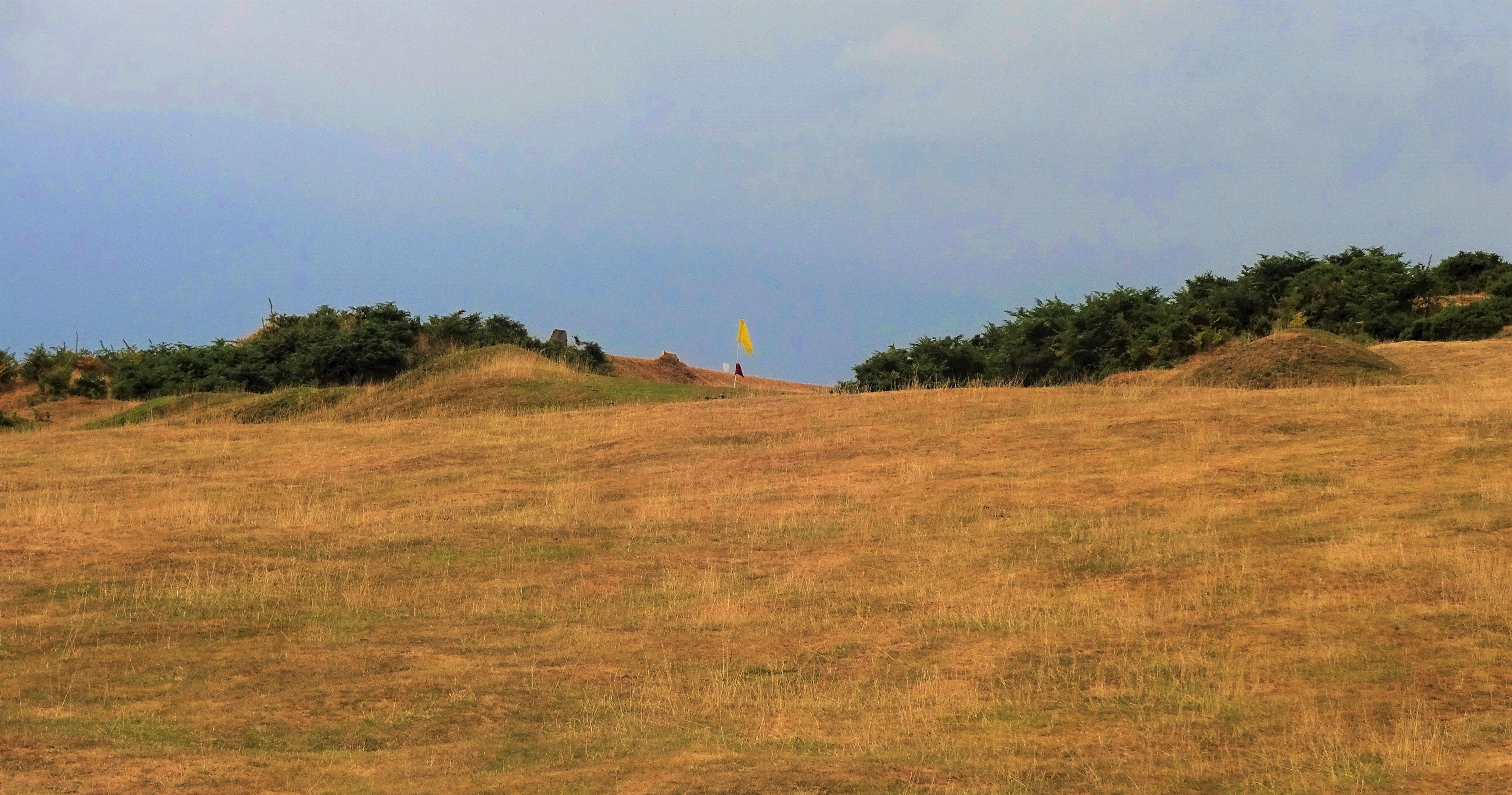
Kington
Kington, England
- AddressBradnor Hill, Kington HR5 3RE, UK
At less than 6,000 yards, many will dismiss Kington as far too short and nothing but a bit of fun. Though fun Kington certainly is, the course should not be taken lightly.
Hutchison's fondness for North Berwick, a links famous for its variety and quirkiness, taught him to value unusual concepts while embracing design ideals developed during the first decades of the 20th century. With Kington’s opening in 1926, Major C.K. Hutchison produced a remarkably crafty course which relies greatly on gaining the correct angles of approach, for the greens often fall heavily away from the front or a side making recovery from the wrong position terribly difficult despite appearances to the contrary.


It should come as no surprise the Major could create such a gem. He was a well-known figure in the game as an amateur (he reached the final of the 1909 British Amateur) and as a serious student of architecture through his membership of Huntercombe, a ground breaking Willie Park Jr design. On a more practical level, James Braid relied heavily on Hutchison's knowledge during the design and construction of Gleneagles King’s and Queen’s Courses and for a brief period, starting in the late 20s, Hutchison was in partnership with Majors G.C. Campbell and S.V. Hotchkin. This "Trinity of Majors" is most famous for their creation of Pulborough, a course well known for its combination of beauty and fierce hazards.
Kington can be described as an inland-super-mare. The sea is miles from Herefordshire, yet the golf at Kington is remarkably similar to seaside golf due to keen turf and rambunctious terrain. Like Royal Ashdown Forest, Kington has no bunkers and the course is generally wide with practically no shaping of the fairways. In fact, Kington is the epitome of why wide is good. Let the golfer open the shoulders, but if he places the ball in the wrong spot he can be left with a devil of a recovery, often times from quite close to the hole.
Bradnor Hill is among the chief defenses with its slopes acting for and against play. The micro undulations (presumably caused by grazing sheep) can leave a player confounded on how to make solid contact with anything other than short irons, or indeed the putter. The course climbs the hill for much of the front nine and affords arresting views of the Brecon Beacons, Malverns and Black Mountains. The club claims that at 1,284 feet Kington is the highest course in England, but that isn't important other than to impart that wind is perhaps Kington's primary defense. The greens tend to be narrow and many are angled against fairways and/or over deep fall-aways. While there are plenty of unknowing breaks to be had, the greens could accurately be described as flat. Kington's turf has a springiness which encourages the player to be aggressive both on the fairways and greens.
The first three holes make steady progress up the hill. All are good and require a deft touch rather than brute force. This abruptly changes on the 4th, still uphill, but a bully of a hole at 435 yards, usually into the prevailing breeze and ending in a sideways two tier green. The short 5th is a wonderful hole – as are all the three pars at Kington. It is here that the player should fully realize that he had better know how to flight his ball and control it once it lands or Kington will steal strokes with niggling regularity.
The course continues to wind its way around Bradnor Hill with blind drives, sloped fairways requiring shaped or very precise tee shots and skyline greens as particular features. Holes of particular merit in this stretch are the one-shotter 9th and the very driveable par four, 10th. Throughout, the course there are awkward, sharpish mounds surrounding the greens which can be terribly frustrating unless one can find some of the available gateways or have great confidence with the wedge.
The 14th is a reachable par five. More people than not tend to find the ferns when having a two shot bash at this green. Unusually for Kington, the green sports a false front which gives the impression of an uphill approach. In truth, the green runs away from the player. After two back and forth holes not without some merit, we reach the 18th, the author’s favourite finishing hole in golf. It isn't often that a significant percentage of handicap golfers can stand on the tee of a par four and aspire to achieve a two-putt birdie. However, on many days this is exactly the goal. Choose a club, take aim at the pro shop, fire away and let the fun unfold.
Without a doubt, Kington can yield a very low score to a good player on his day. However, regardless of scores earned, the course stands as testament to what good design is about; the opportunity to hit all manner of shots while providing fun for the short and long capper alike. For those willing to make the trek to this small corner of pastoral England, memories of Kington’s endearing qualities will stick with them uncommonly well.
Article by Sean Arble
Course Reviews
Leave a Review
This course has not been reviewed.
If you have played this course, consider .
Thanks for the review
Your review has been successfully submitted and will be reviewed for approval.
Course Reviewed
You’ve already submitted a review for this course.
Course Architect
View All
Hutchison served as assistant to James Braid during the construction of Gleneagles and the reconstruction of Carnoustie. In the mid-1920s he formed a firm with Colonel S.V. Hotchkin.

